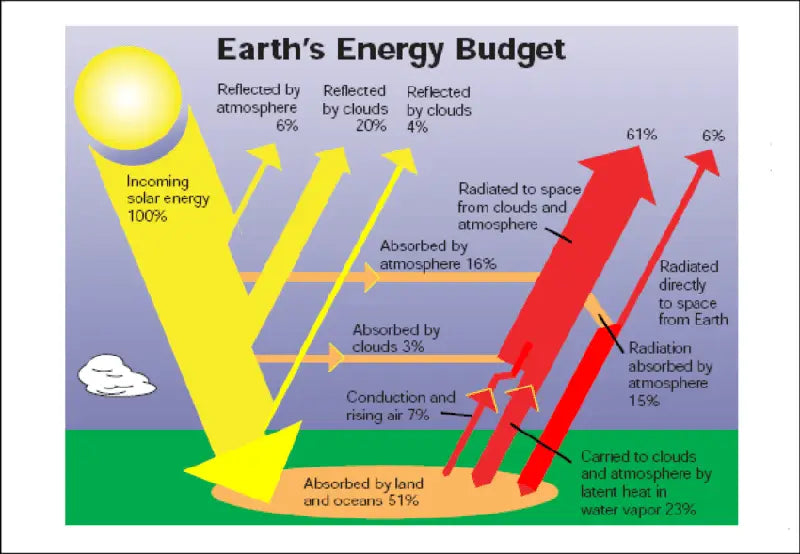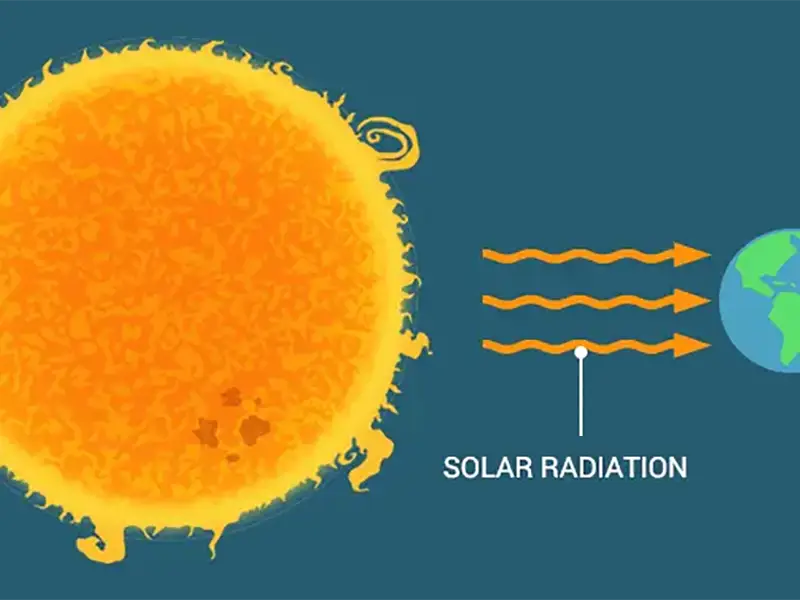
Main content:
Due to the existence of the atmosphere, the amount of solar radiation energy that actually reaches the earth's surface is affected by many factors. Generally speaking, the sun altitude, air quality, atmospheric transparency, geographic latitude, sunshine time and altitude are the main factors affecting solar radiation energy.
1. The height of the sun affects the solar radiation energy
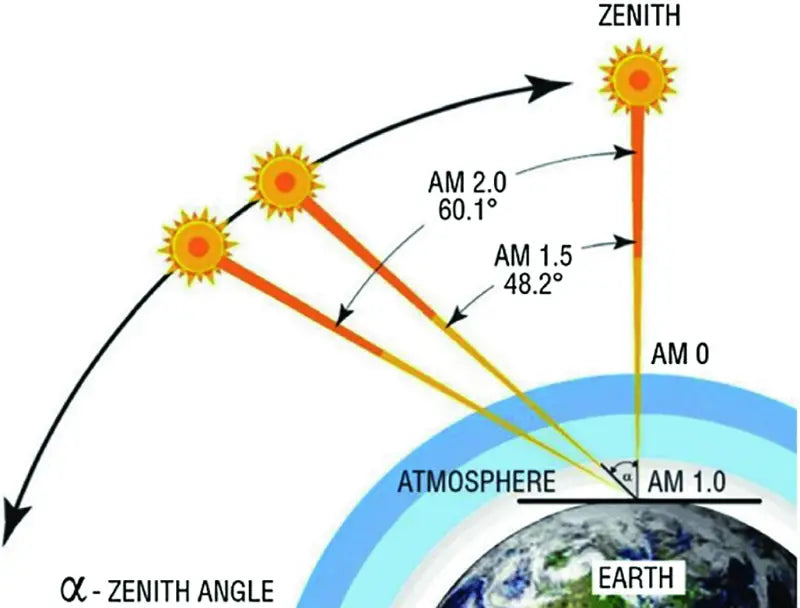
The angle is the angle of incidence. When the incident angle is large, the sun is high, and the solar radiation energy is also large; conversely, the human radiation angle is small, the sun is low, and the solar radiation energy is also small.
Since the earth's atmosphere absorbs, reflects and scatters solar radiation, the proportion of infrared, visible light and ultraviolet rays in the light rays also changes with the height of the sun. When the sun altitude is 9, in the solar spectrum, infrared accounts for 50%, visible light accounts for 46%, and ultraviolet light accounts for 4%; when the sun altitude is 30°, infrared light accounts for 53%, visible light accounts for 44%, and ultraviolet light accounts for 3%; When the sun's altitude is 5, the infrared light accounts for 72%, the visible light accounts for 28%, and the ultraviolet light is close to 0.
For a certain ground plane, when the height of the sun is low, the distance of light passing through the atmosphere is longer, and the solar radiation energy is attenuated more. There is less solar radiation on the plane. On the contrary, there are more.
2. Air quality affects solar radiation energy

Due to the presence of the atmosphere, solar radiation will be greatly attenuated before reaching the ground. The magnitude of this solar radiation attenuation is closely related to the length of the solar radiation passing through the atmosphere. The longer the distance traveled by the sun's rays in the atmosphere, the more solar radiation energy is lost; the shorter the distance, the less solar radiation energy is lost. Usually we call the sun at the top of the head, that is, the distance the light travels through the atmosphere when the sun hits the ground vertically, called 1 atmospheric mass. When the sun is in other positions, the atmospheric mass is greater than 1. For example, at 8-9 in the morning, there are about 2 to 3 atmospheric masses. The greater the mass of the atmosphere, the longer the distance of the sun's light through the atmosphere, the more attenuation it receives, and the less the solar radiation energy reaching the ground.
3. Atmospheric transparency affects solar radiation energy
In the upper boundary of the atmosphere and the plane perpendicular to the light, the solar radiation energy is basically a constant but on the surface of the earth, the solar radiation energy is constantly changing. This is mainly due to the difference in the degree of atmospheric transparency. Atmospheric transparency is a parameter that characterizes the degree to which the atmosphere transmits sunlight. In clear and cloudless weather, the transparency of the atmosphere is high, and more solar radiation reaches the ground. When the sky is cloudy or dusty, the transparency of the atmosphere is very low, and less solar radiation reaches the ground. It can be seen that the transparency of the atmosphere is closely related to the amount of cloudiness in the sky and the amount of impurities such as dust contained in the atmosphere.
4. Geographical latitude affects solar radiation energy
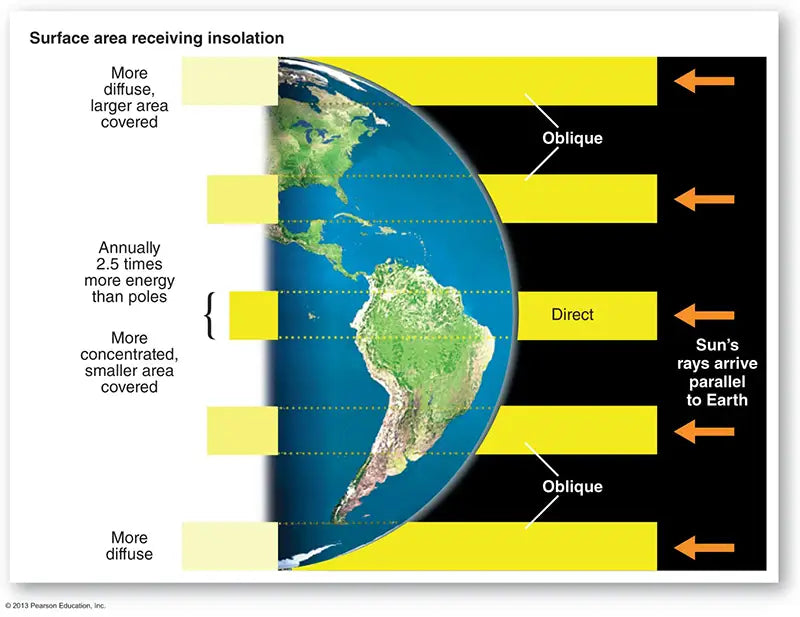
The solar radiation energy gradually weakens from low latitudes to high latitudes. What is the reason for this? We assume that the atmospheric transparency at high latitudes and low latitudes is the same, and compare under such conditions,
For example, St. Petersburg, which is located at high latitudes, can only obtain 335kJ of solar radiation energy per year in an area of 1 square meter, while in Beijing, the capital of China, due to its location in the middle latitude, it can obtain 586kJ of solar radiation energy; In the Saharan region of latitude, solar radiation energy as high as 921 kJ can be obtained. It is for this reason that the climate near the equator is hot all year round, and the seasons are lush green; while near the Arctic Circle, it is cold all year round, covered in silver and snow, just like two different worlds.
5. Sunshine time affects solar radiation energy
Sunshine time is also an important factor affecting the solar radiation energy on the ground. If there are 14 hours during the day in a certain area, if the cloudy time is ≥ 6 hours, and the time of the sun is ≤ 8 hours, then we say that the sunshine time of that day in the area is 8 hours. The longer the sunshine time, the more solar radiation energy the ground gets.
6. Altitude affects solar radiation energy
The higher the altitude, the better the transparency of the atmosphere and the higher the solar radiation.
also. Sun-earth distance, topography, topography, etc. also have certain influence on solar radiation energy. For example, the Earth's average temperature at perihelion is 4°C warmer than at aphelion. For another example, at the same latitude, the temperature of the basin is higher than that of the Pingchuan, and the temperature of the sunny slope is higher than that of the shady slope.
In a word, there are many factors that affect the solar radiation energy on the ground, but the size of the solar radiation energy in a specific area is determined by the comprehensive results of the above factors.
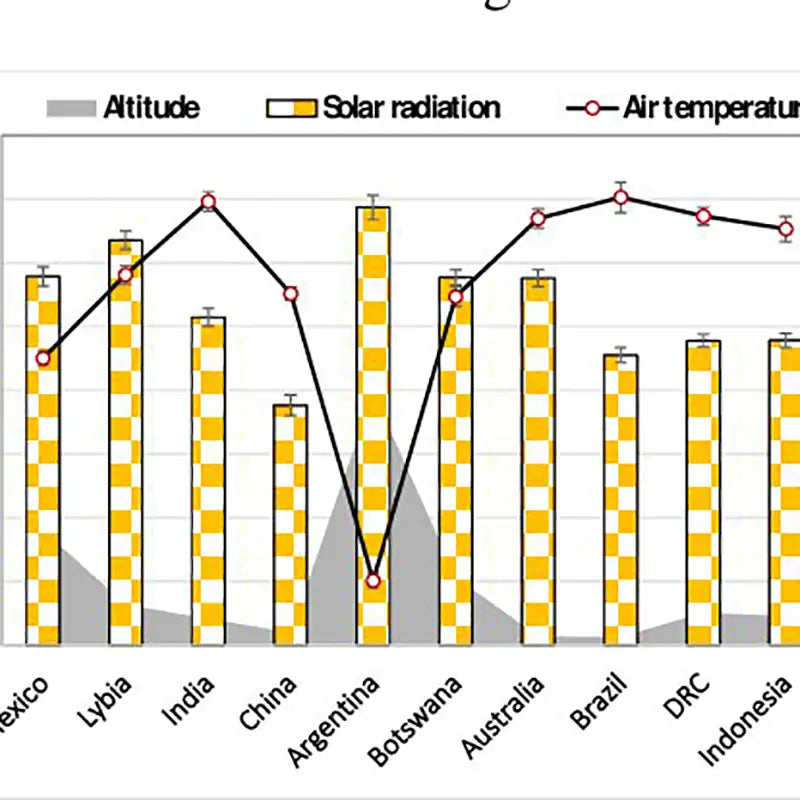
As a kind of energy, solar radiation energy has unique characteristics compared with coal, oil, nuclear energy, etc. Solar energy can be used in home energy storage, and it can also be applied to street lights, off grid batteries system, etc. Its advantages can be summarized in the following four points:
First, the universality of solar radiation energy. The sun shines on the earth, and there is solar radiation everywhere, which can be used on the spot, without the need to search everywhere, and no need for trains, ships, cars, etc. to be transported day and night. This has great advantages for solving the energy supply in remote and remote areas, villages and islands with inconvenient transportation.
Second, the harmlessness of solar radiation energy, the use of solar radiation energy as energy, no waste residue, waste, waste water, waste gas discharge, no noise, no harmful substances to the human body, so it will not pollute the environment, no public nuisance.
Third, the longevity of solar radiation energy. As long as the sun exists, there is solar radiation energy. Therefore, the use of solar radiation energy as energy can be said to be inexhaustible.
Fourth, the hugeness of solar radiation energy. The total amount of solar radiation energy reaching the ground in one year is tens of thousands of times larger than the total amount of various energy sources currently consumed by the earth every year.
But it also has disadvantages, mainly:
First, the dispersion of solar radiation energy. That is, the energy density is low. At noon on a clear day, the solar radiation energy that can be received on a ground area of 1 square meter perpendicular to the direction of sunlight is only about 1.3kW on average. As an energy source, solar radiation has a very low energy density. Therefore, in actual use, it is often necessary to use a set of solar energy collection equipment with a considerable area. This makes the equipment occupy a large area, uses a lot of materials, has a complex structure, and increases the cost, which affects the promotion and application of solar energy.
Second, the randomness of solar radiation. The direct solar radiation energy reaching a certain ground is extremely unstable due to the influence of climate, season and other factors. This adds a lot of difficulties to the large-scale utilization of solar radiation energy.
Third, the intermittent nature of solar radiation. The direct radiant energy of the sun reaching the ground changes with the alternation of day and night, making most solar devices unable to work at night. In order to overcome the difficulties caused by no direct solar radiation and weak scattered radiation at night, it is necessary to research and equip energy storage equipment, so that solar radiation energy collection wells can be stored in sunny days for use at night or in cloudy and rainy days.
